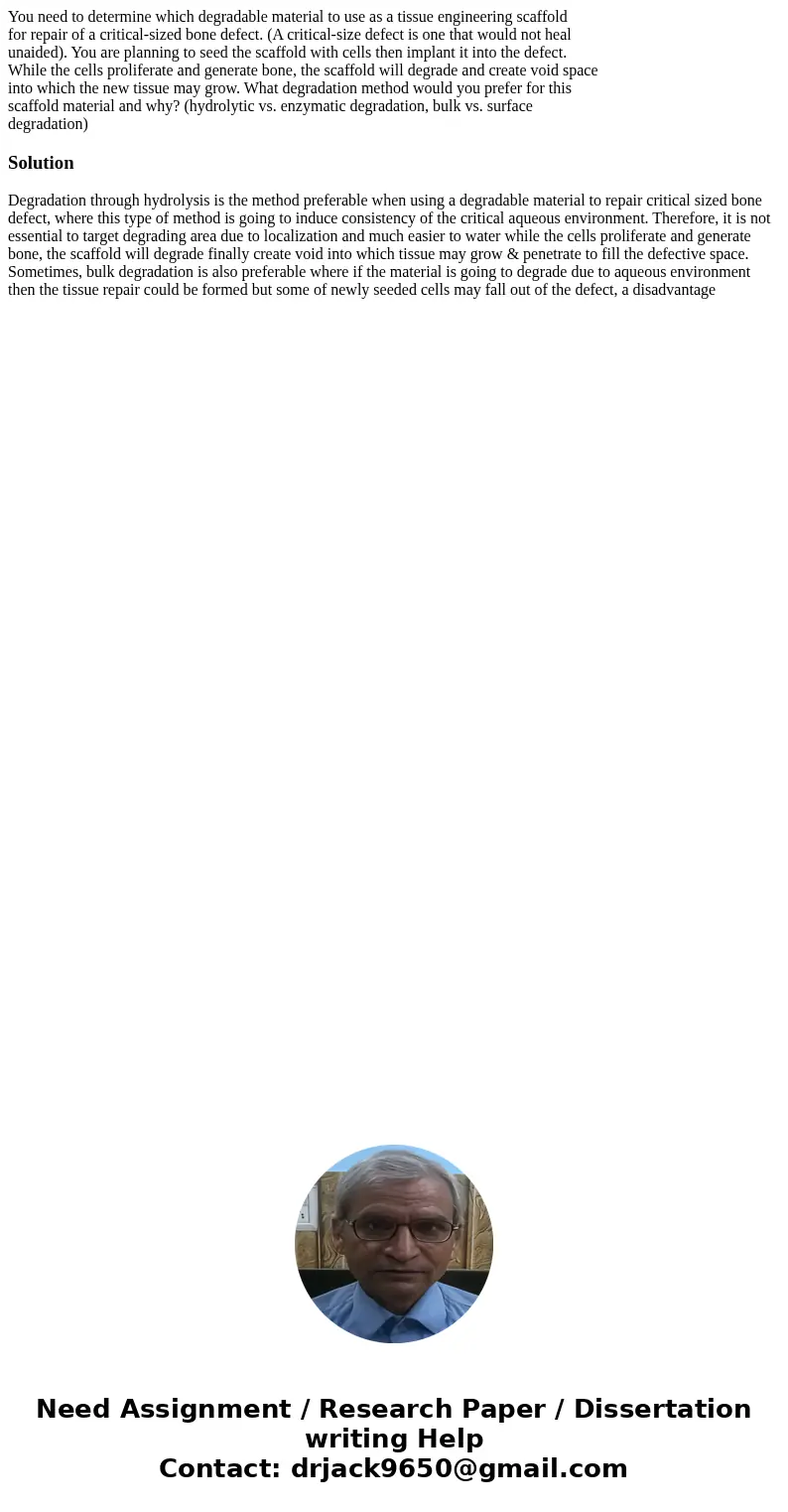You need to determine which degradable material to use as a
You need to determine which degradable material to use as a tissue engineering scaffold
for repair of a critical-sized bone defect. (A critical-size defect is one that would not heal
unaided). You are planning to seed the scaffold with cells then implant it into the defect.
While the cells proliferate and generate bone, the scaffold will degrade and create void space
into which the new tissue may grow. What degradation method would you prefer for this
scaffold material and why? (hydrolytic vs. enzymatic degradation, bulk vs. surface
degradation)
Solution
Degradation through hydrolysis is the method preferable when using a degradable material to repair critical sized bone defect, where this type of method is going to induce consistency of the critical aqueous environment. Therefore, it is not essential to target degrading area due to localization and much easier to water while the cells proliferate and generate bone, the scaffold will degrade finally create void into which tissue may grow & penetrate to fill the defective space. Sometimes, bulk degradation is also preferable where if the material is going to degrade due to aqueous environment then the tissue repair could be formed but some of newly seeded cells may fall out of the defect, a disadvantage

 Homework Sourse
Homework Sourse